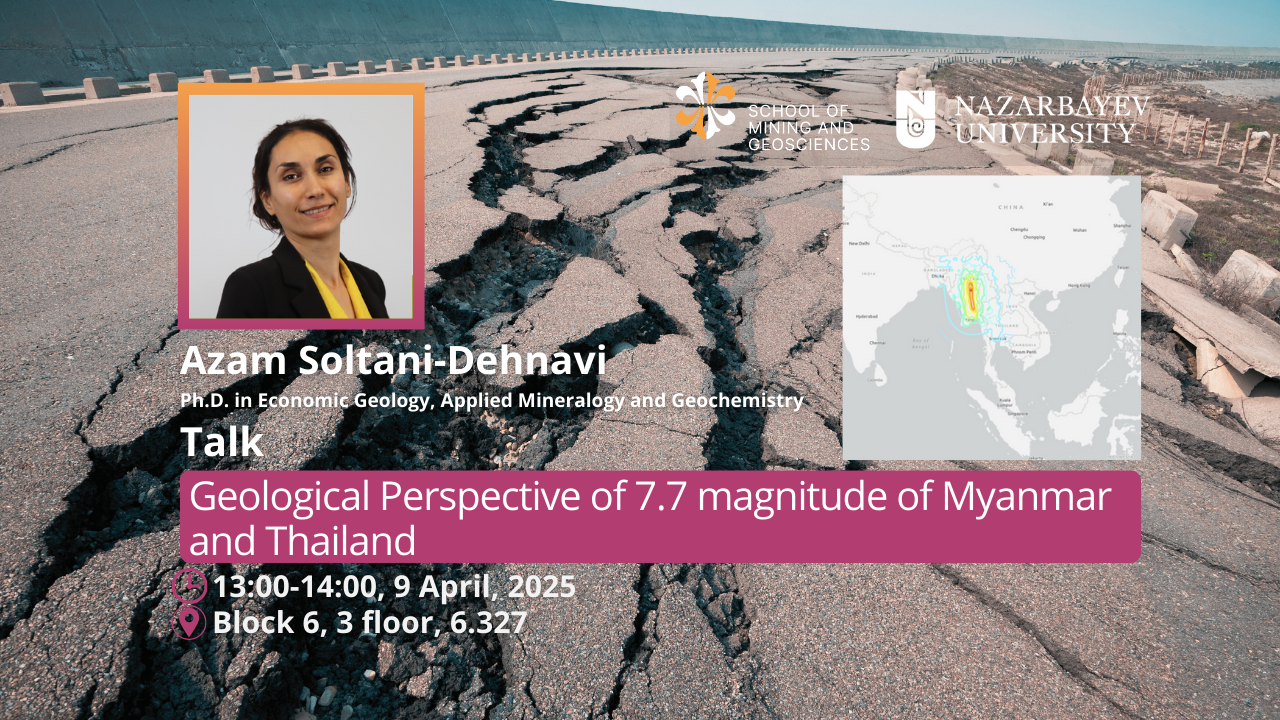Talk by Dr. Azam Soltani-Dehnavi
School of Mining and Geosciences, Nazarbayev University
On March 28, 2025, a powerful 7.7 magnitude earthquake struck Southeast Asia, with its epicenter in Mandalay, Myanmar—the country's second-largest city. The seismic waves also impacted neighboring Thailand. This earthquake was caused by strike-slip faulting between the India and Eurasia tectonic plates.
Given the region’s vulnerability to high-magnitude earthquakes, understanding the geological processes behind such events is essential for assessing risks and improving disaster preparedness.
In this talk, Dr. Azam Soltani-Dehnavi will explore the fundamentals of seismology, structural geology, tectonics, and the regional geological framework of Southeast Asia. This is an excellent opportunity for students, researchers, and professionals interested in geohazards and tectonic activity.
📅 When: Wednesday, April 9, 2025
🕐 Time: 13:00–14:00
📍 Location: Block 6, Floor 3, Room 6.327
School of Mining and Geosciences, Nazarbayev University
On March 28, 2025, a powerful 7.7 magnitude earthquake struck Southeast Asia, with its epicenter in Mandalay, Myanmar—the country's second-largest city. The seismic waves also impacted neighboring Thailand. This earthquake was caused by strike-slip faulting between the India and Eurasia tectonic plates.
Given the region’s vulnerability to high-magnitude earthquakes, understanding the geological processes behind such events is essential for assessing risks and improving disaster preparedness.
In this talk, Dr. Azam Soltani-Dehnavi will explore the fundamentals of seismology, structural geology, tectonics, and the regional geological framework of Southeast Asia. This is an excellent opportunity for students, researchers, and professionals interested in geohazards and tectonic activity.
📅 When: Wednesday, April 9, 2025
🕐 Time: 13:00–14:00
📍 Location: Block 6, Floor 3, Room 6.327
